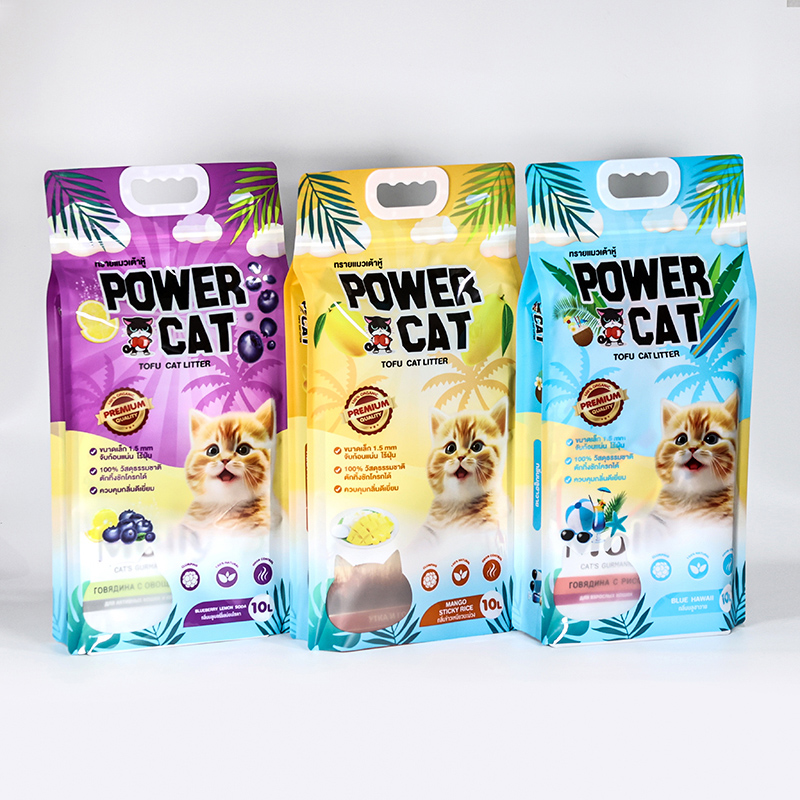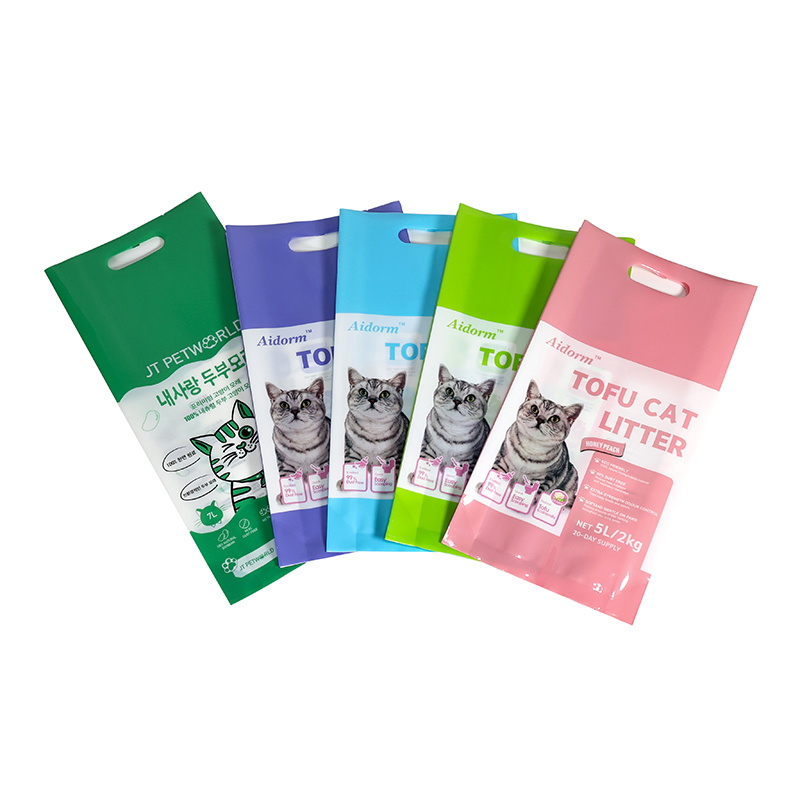In recent years, the pet market has been growing rapidly, and cat litter, as an essential product for cat owners, has seen increasing attention to its packaging materials. Different types of cat litter require specific packaging solutions to ensure sealing, moisture resistance, and durability while also considering environmental impact.
1. Bentonite Cat Litter: PE+VMPET Composite Bags for Moisture Resistance and Durability
Bentonite cat litter is popular for its strong absorbency and clumping properties, but it tends to produce dust and can easily clump when exposed to moisture. To address these issues, PE (polyethylene) + VMPET (vacuum metallized polyester) composite bags are commonly used. This material provides excellent moisture resistance and prevents dust leakage, keeping the litter dry. Some premium brands also use aluminum foil composite bags for enhanced waterproofing and barrier properties.


2. Tofu Cat Litter: Biodegradable Kraft Paper Bags for Sustainability and Breathability
Tofu cat litter is known for its eco-friendly nature and flushable design, so its packaging often features biodegradable materials. A popular choice is kraft paper bags with a PE inner lining, where the outer kraft paper is biodegradable, and the inner PE layer provides basic moisture resistance. Some brands go a step further by using PLA (polylactic acid) biodegradable plastic bags, reducing environmental impact even more.
3. Crystal Cat Litter: PET/PE Composite Bags with Transparent Design
Crystal cat litter, made of silica gel beads, has strong absorbency but does not clump. As a result, its packaging needs to be durable and well-sealed. PET (polyethylene terephthalate)/PE (polyethylene) composite bags are commonly used, offering high transparency so customers can easily check the litter’s granule quality while maintaining moisture resistance to extend the product’s shelf life.
4. Mixed Cat Litter: PE Woven Bags for High Load Capacity
Mixed cat litter, which combines bentonite, tofu, and other materials, is often heavier and requires strong packaging. PE woven bags are a popular choice due to their high tensile strength and abrasion resistance, making them ideal for large packages of 10kg or more. Some premium products also use PE + metallized film composite bags to enhance moisture and dust protection.
5. Wood Pellet Cat Litter: Eco-Friendly Non-Woven Fabric Bags for Breathability and Sustainability
Wood pellet cat litter is known for its natural, dust-free properties, and its packaging often uses eco-friendly non-woven fabric bags. This material allows for breathability, preventing mold caused by excessive sealing while also being partially biodegradable, aligning with green sustainability trends.
Trends in Cat Litter Packaging: A Shift Toward Sustainability and Functionality
As consumer awareness of environmental issues grows, cat litter packaging is evolving toward biodegradable and recyclable materials. Some brands have started using fully biodegradable PLA bags or paper-plastic composite packaging, which ensures moisture resistance while reducing plastic usage. Additionally, packaging innovations such as resealable zipper bags and handle designs are becoming more common, enhancing user convenience.
With intense competition in the cat litter market, brands must focus not only on product quality but also on innovative and eco-friendly packaging materials. As packaging technology continues to advance, cat litter packaging will see further improvements in sustainability, durability, and aesthetics, ultimately providing a better user experience.
Post time: Mar-28-2025







